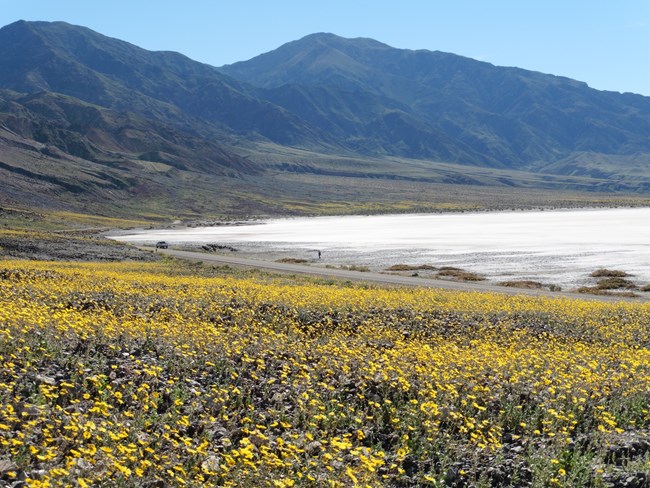
NPS Photo
Overview
Mojave Desert Network parks are faced with the increasing pressures of poor air quality, habitat fragmentation or loss, and altered disturbance regimes (e.g., fire, land development). Climate models also suggest significant changes—increasing temperatures but decreasing precipitation—for the southwestern United States. The presence and composition of vegetation depends on a multitude of abiotic and biotic factors, including climate, resource availability, and soil microbial community. This makes vegetation, and the soils associated with it, good general indicators of environmental change across parks.
We conduct Integrated Uplands monitoring on specific upland shrub communities. Shrub communities collectively represent a large proportion of each park, and they capture several focal communities of interest such as Joshua tree, creosote bush, and sagebrush.
Monitoring Objectives
- Determine trends in shrub species and life form composition, structure, and relative abundance.
- Determine status and trends in soil chemistry, the magnitude and extent of soil erosion and surface disturbance, and soil hydrologic function.
- Determine status and trends in abundance and composition of biological soil crusts.
- Determine status and trends in distribution and abundance of targeted invasive plant species.
Reports and Publications
Monitoring protocols describe why and how we collect, manage, analyze, and report monitoring data about the network's Vital Signs. Each protocol consists of a narrative and an associated set of standard operating procedures (SOPs).
Monitoring reports summarize data and findings from our Vital Signs monitoring activities.
Source: NPS DataStore Collection 4278. To search for additional information, visit the NPS DataStore.
Source: NPS DataStore Collection 4274. To search for additional information, visit the NPS DataStore.
Source: NPS DataStore Collection 8002. To search for additional information, visit the NPS DataStore.
Articles
Last updated: December 6, 2023
